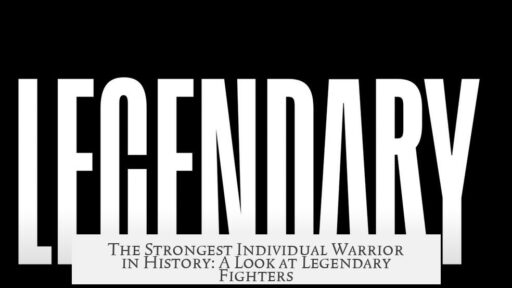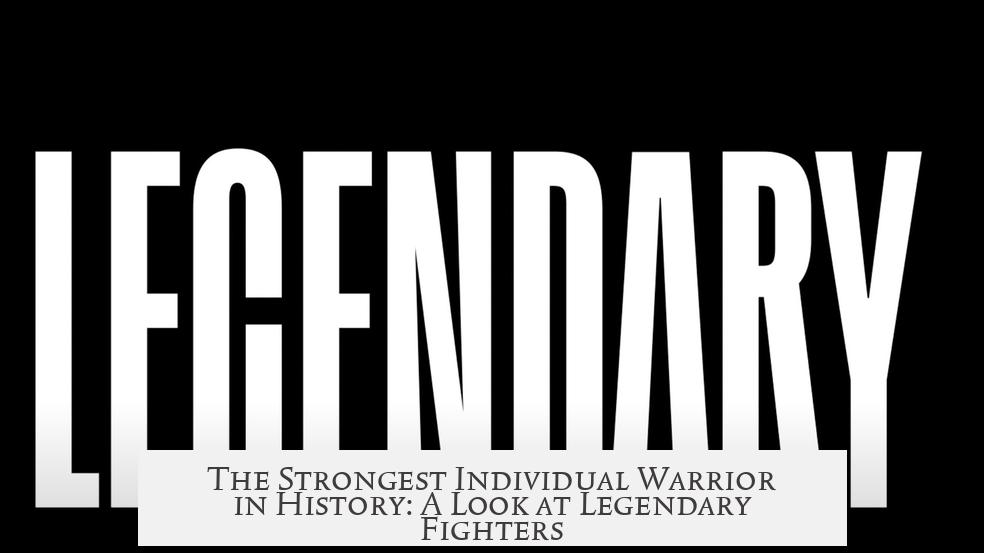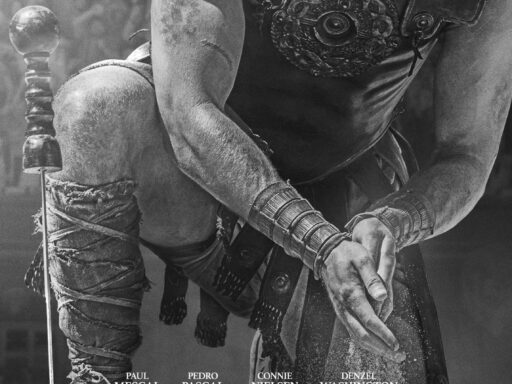The strongest individual warrior in written history cannot be pinpointed to a single person due to varying criteria such as physical strength, combat skill, strategic genius, and legendary feats. However, several historically renowned warriors stand out for their extraordinary prowess, battlefield impact, and lasting legacy.
Strength can mean different things: raw physical power, skill in combat, tactical genius, or sheer legendary impact. Various figures excel in one or more of these areas, making any definitive answer subjective.
Miyamoto Musashi ranks among the most distinguished warriors. Undefeated in over 60 duels, Musashi’s mastery of dual swordsmanship using katana and wakizashi changed Japanese sword fighting. He relied on intelligence and technique as much as physical power, often defeating stronger adversaries with strategy alone. His treatise on swordsmanship remains influential worldwide.
In contrast, legendary Viking warriors are famed for brute strength and ferocity. A giant Norse axeman at the Battle of Stamford Bridge reportedly held off an entire English army alone, felling as many as 40 enemies before being killed. This tale highlights both legendary strength and battlefield stamina.
Roman warriors illustrate endurance and resilience under brutal conditions. L. Siccius Dentatus fought 120 battles, survived 45 wounds on his front, and won numerous contests of arms. M. Sergius excelled despite severe injuries, including loss of a hand, yet continued fighting and winning battles. Their feats emphasize perseverance as a form of strength.
Simo Häyhä, “The White Death,” was a sniper credited with over 500 kills during the Winter War between Finland and the Soviet Union. His deadly marksmanship demonstrated a different kind of individual warrior strength—precision and patience under extreme pressure.
William Marshal represents a rare combination of martial skill and political acumen. Known as one of the best knights of the Middle Ages, Marshal won approximately 500 tournaments and numerous battles, earning the respect and fear of opponents alike. His chivalric honor and leadership highlight strength in both combat and character.
In the ancient Greek world, champions like Arrhichion and Dioxippus, renowned pankratiasts, were considered nearly invincible. Arrhichion famously won his final competition posthumously, dying while still overpowering his opponent. Dioxippus defeated a fully armed enemy with only a club, showcasing skill and courage overcoming weaponry.
Legendary figures such as Ramses the Great demonstrated strength through leadership and battlefield command. While his personal combat prowess is less documented, leading vast armies and surviving multiple campaigns until old age marks a different kind of warrior strength.
More modern warriors also deserve mention for extraordinary individual actions. Alvin C. York’s solo assault against multiple German machine gun nests during WWI, capturing 132 prisoners, exemplifies tactical audacity and combat effectiveness. Similarly, Jack Churchill, fighting with bow and sword during WWII, and John McKinney, with over 100 kills including hand-to-hand combat, showcase individual warrior potential in modern warfare.
In Chinese military history, figures like Guan Yu, respected as a symbol of loyalty and martial ability, and Lu Bu, rumored to have dominated large battlefields with fearsome skills, stand as embodiments of warrior strength intertwined with legend.
Finally, some warriors—like King Kamehameha I or Te Amotu Takanawa—combine physical power, combat skill, and tactical brilliance to conquer entire regions or fend off overwhelming odds single-handedly.
| Warrior | Notable Strength | Key Accomplishments |
|---|---|---|
| Miyamoto Musashi | Master swordsman, undefeated duelist | 60+ duels won, double sword fighting founder |
| Viking Axeman | Brute physical power, battlefield endurance | Held Stamford Bridge alone, killed ~40 enemies |
| L. Siccius Dentatus | Durability, perseverance | 120 battles, 45 wounds, multiple trophies |
| Simo Häyhä | Deadly precision with sniper rifle | 500+ confirmed kills in Winter War |
| William Marshal | Combat skill, leadership, chivalry | 500 tournaments won, influential knight |
| Arrhichion (Greek pankratiast) | Combat skill, willpower | Won Olympic pankration posthumously |
| Alvin C. York | Tactical acumen, marksmanship | WWI machine gun nests captured, 132 prisoners |
| Jack Churchill | Unorthodox combat skill, bravery | Solo Nazi camp capture using sword, bow |
| Lu Bu | Legendary battlefield prowess | Feared warrior during Three Kingdoms period |
The strongest individual warrior depends on perspective. Physical might, combat skill, battlefield achievements, and psychological dominance all contribute to strength. Some excelled in one-on-one duels, others in leading or inspiring troops. Myths and legends often blur facts but underscore the universal respect for martial prowess.
Many warriors exhibit extraordinary attributes:
- Endurance through repeated battles and injuries
- Exceptional skill in hand-to-hand or ranged combat
- Strategic and psychological superiority
- Legendary feats inspiring myth and folklore
Historical records, folklore, and biographies together build a diverse picture of warrior strength.
- Miyamoto Musashi balances skill with intellect, undefeated in duels.
- Viking axeman symbolizes unstoppable physical power in battle.
- Roman and Greek warriors highlight resilience and valor despite wounds.
- Simo Häyhä illustrates deadly precision and patience.
- Modern heroes like Alvin York and Jack Churchill show individual tactical brilliance.
- Legendary warriors like Lu Bu and Guan Yu are cultural symbols of martial excellence.




